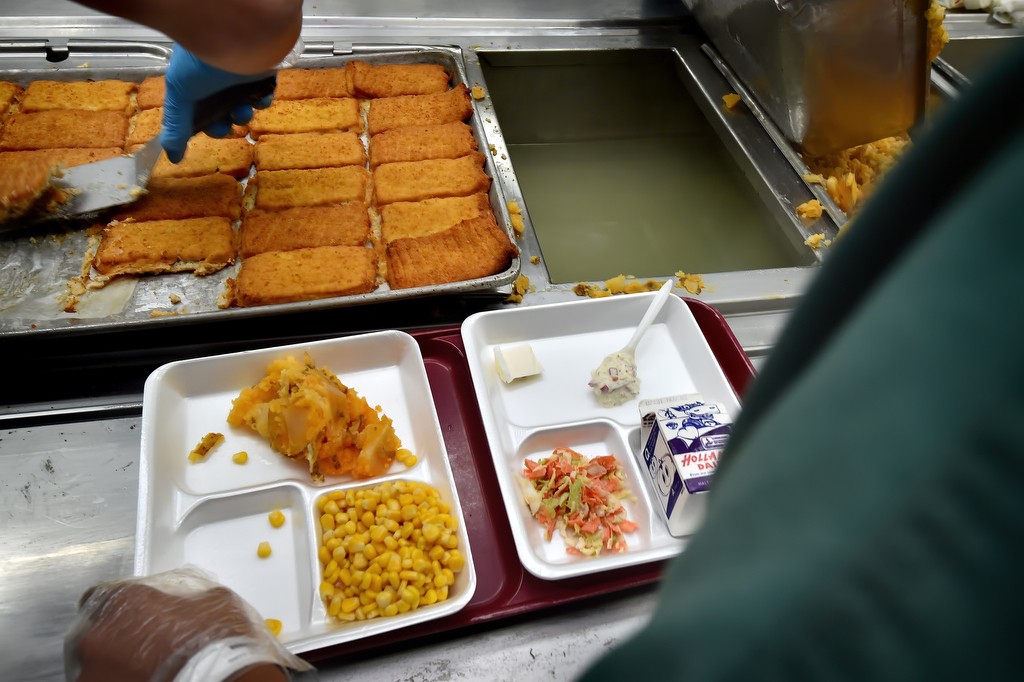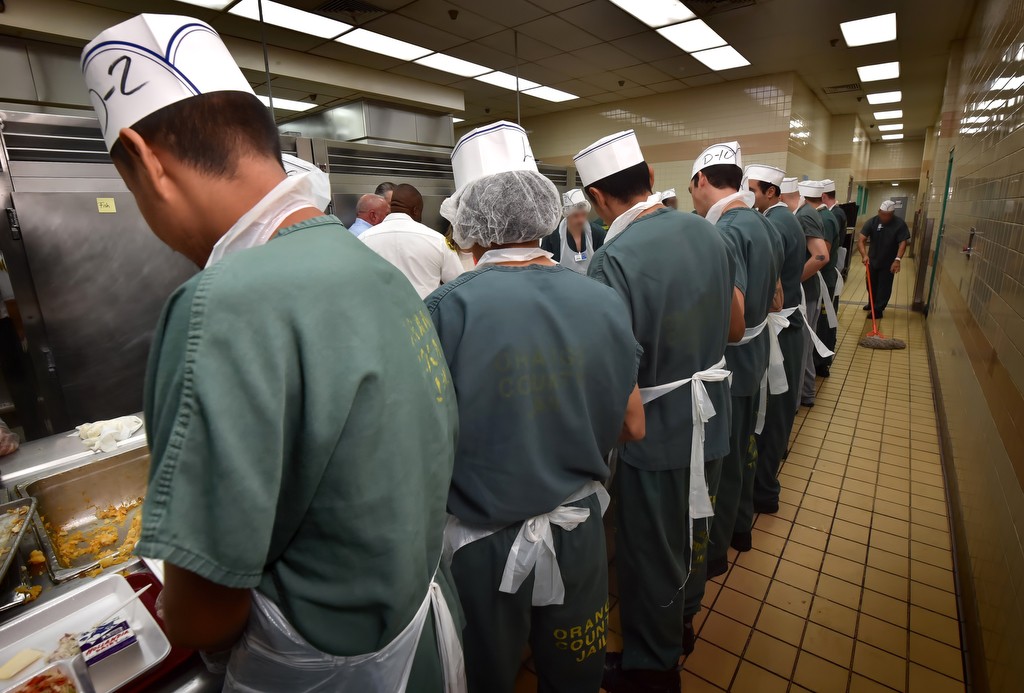They never close and never stop.
Planning takes weeks and execution must follow meticulous rules and requirements.
It’s an operation of the Orange County jail system that likely isn’t given much thought by an outsider, but for those who are a part of making sure more than 6,000 inmates get fed every day, they know the importance of minding the details.
“Weddings, catering and those types of large events aren’t even in the same ballpark as industrial-level cooking,” said Greg Boston, Director of Inmate Services for OCSD. “With the planning that goes into every meal, you can see why we need military precision.”
And who better to perform the job with military precision than a former military man?
OCSD Food Service Manager Rod Debolt spent 27 years feeding thousands of marines when he served as a master sergeant working as the Food Services Technician for the Marine Corp Airborne Western.
“There are a lot of parallels, in terms of the scope of the job,” Debolt said.
Parallels like trying to figure out how to feed thousands of people at the same time in a timely and cost-effective way — something that is not an easy feat.
“It is a Rubik’s cube to get all of those things working together,” Debolt said.
And it’s something that, despite what a Hollywood portrayal of chow time in a jail might show, involves a lot more than slopping some questionable gray mush onto a cafeteria tray.
“The process is very complex,” Boston said.
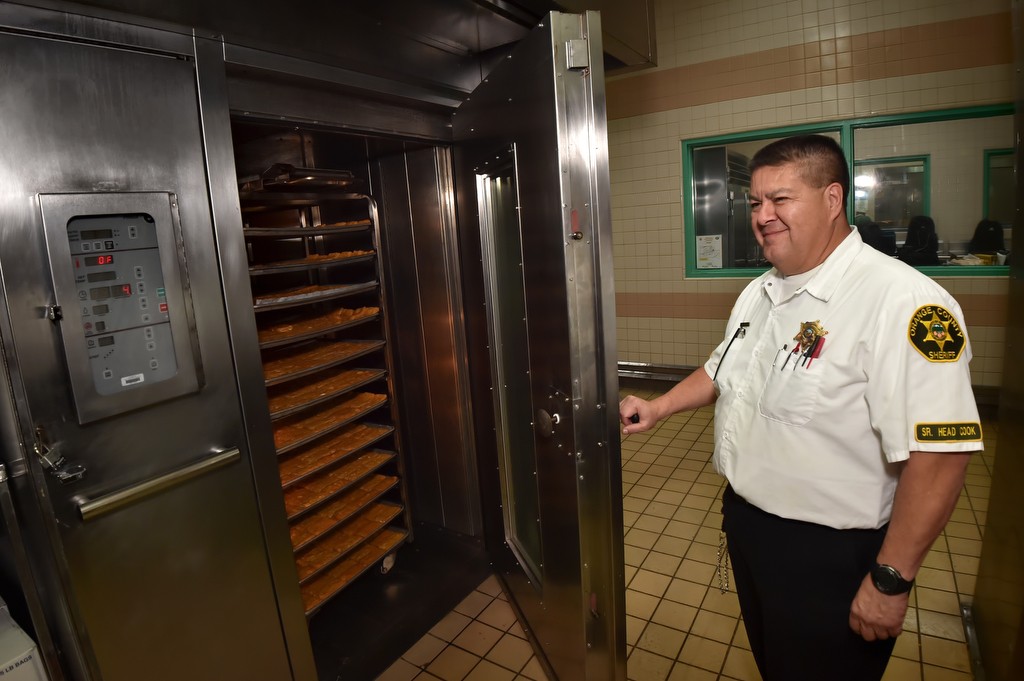
Marcelo Jimenez, senior head cook at Theo Lacy Facility in Orange, opens a door for an oven used to help feed the well over 3,000 inmates at the jail.
Photo by Steven Georges/Behind the Badge OC
Each meal has to meet certain calorie and nutritional requirements. Inmates must be served 2,700 calories a day and the meals have to include specific amounts of protein, fat, carbohydrates and sodium.
Then there are inmates with special requests that need to be fulfilled — those who eat Kosher, who follow a vegan diet, eat foods fit for pre-natal needs or who must adhere to low-glycemic meals for health reasons.
“We have to be able to meet all those needs,” Debolt said.
Menu preparation takes weeks and OCSD employees must ensure there is always a 21-day supply of food on hand.
After a month’s worth of meals are planned out, a nutritionist reviews the menu to ensure it meets county and federal health standards.
Refrigerators and freezers larger than some one-bedroom apartments keep fresh produce and proteins.
Walk-in dry storage facilities the size of a small restaurant keep pallets of rice, beans and other goods.
Food services employs 385 inmates in its program. At Theo Lacy, the largest O.C. jail kitchen operation, 65 inmates work the night shift and 90 work the day shift.
Someone is always cleaning and someone is always cooking.
“This kitchen is cleaner than probably most restaurants,” Debolt noted, pointing out they are constantly reviewed by county and state health inspectors.

Inmates help prepare the food at the Theo Lacy Facility each day. In the background are walk-in freezers and refrigerators.
Photo by Steven Georges/Behind the Badge OC
On a recent Friday, several inmates chopped carrots and onions using knives chained to their workstations to prep for the evening’s dinner: breaded fish filet, homemade coleslaw, corn, potatoes and two slices of wheat bread.
Several men mopped the floors section by section while others tended to dishes from the morning’s breakfast.
Inmates who are part of the kitchen crew worked in an assembly line to get the evening’s meal ready. (The jails serve up hot breakfast, a sack lunch and a hot dinner every day.)
For many working in the kitchen, they also obtain life skills and ServSafe certification, which could help them land a restaurant job when they are released.
“It is considered a privilege to work in the kitchen,” Boston said. “We train all of the inmates on sanitation and workplace safety.”
The food is better than expected, rivaling some school cafeterias (at least when compared to the few school cafeterias this reporter has dined in.)
Among the favorite meals for inmates: hot dogs, pancakes and hamburgers.
And although the importance of how and when to feed the masses might not resonate with an outsider, those working on the inside know well-fed inmates means less chance for upheaval and potentially dangerous situations.
“It is important that this all runs smoothly,” Boston said. “Because when they’re in here, their life revolves around food.”
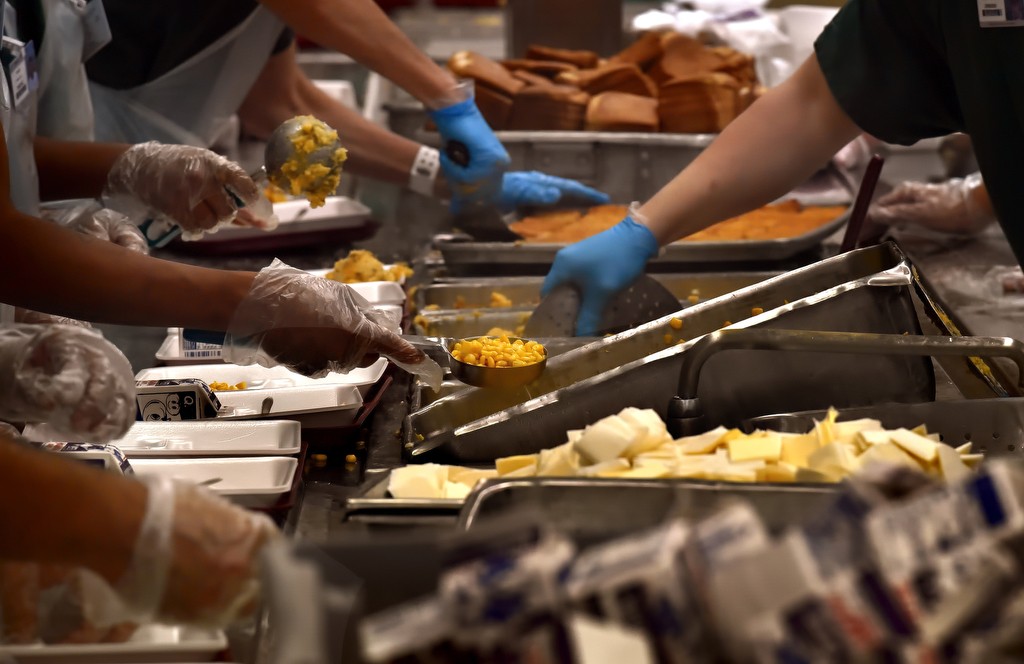
Inmates line up in an assembly line to add food to each plate served at the Theo Lacy Facility.
Photo by Steven Georges/Behind the Badge OC

OC Sheriff Dep. Mario Morales keeps an eye on inmates at the Theo Lacy Facility in Orange.
Photo by Steven Georges/Behind the Badge OC
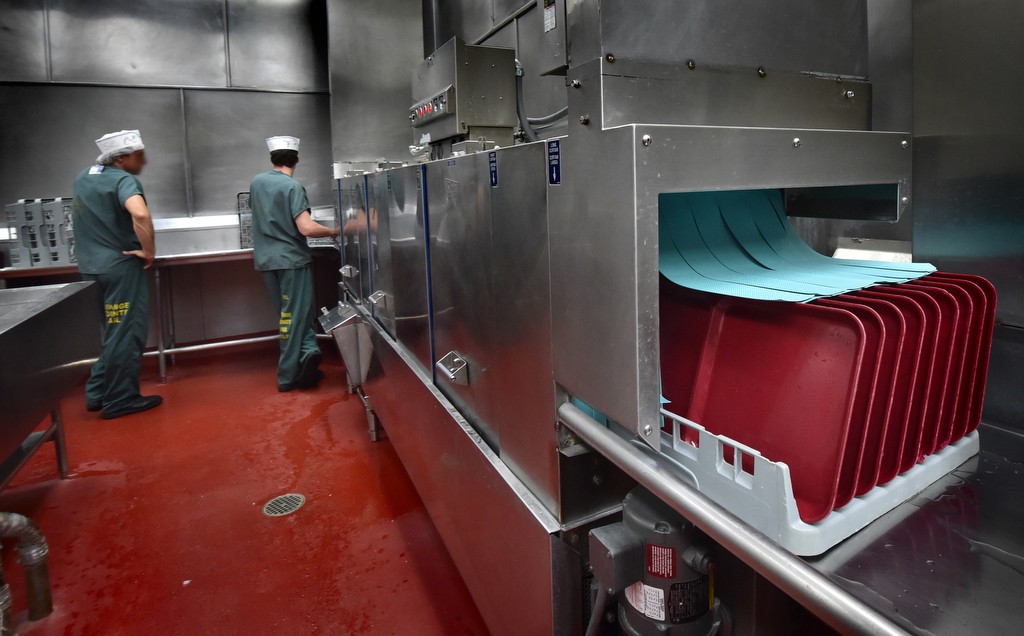
Industrial dishwashers, with the help of inmate workers, are used to clean the large volume of plates, cups and trays served at the Theo Lacy Facility each day.
Photo by Steven Georges/Behind the Badge OC
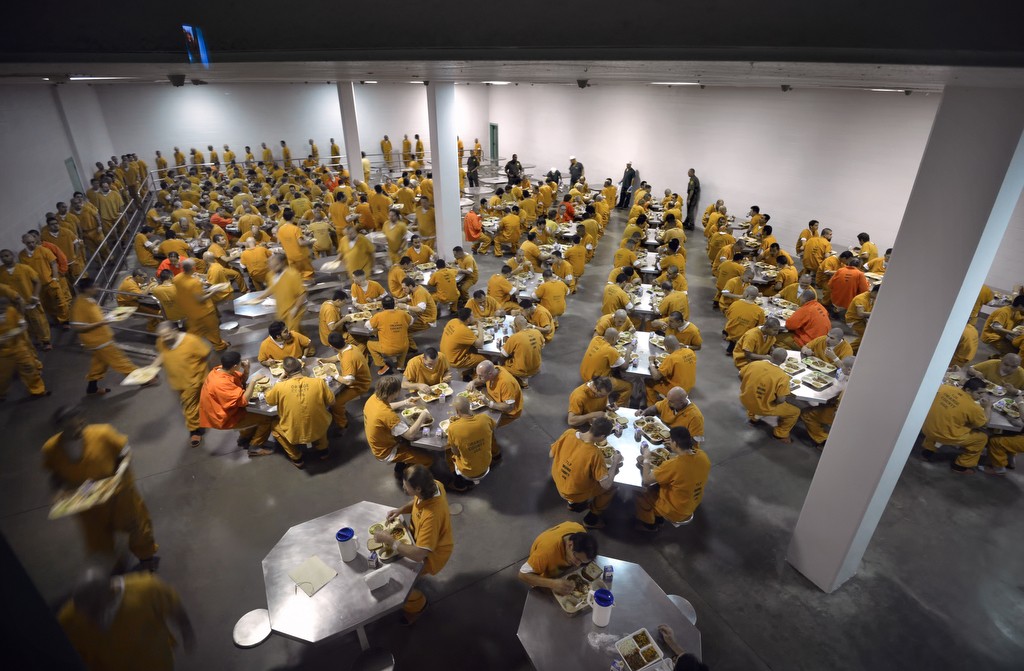
In this 2012 file photo, inmates line up to get their food and sit down at the start of dinner in a dining room capable of feeding 292 inmates at the Theo Lacy Facility jail in the City of Orange.
Photo by Steven Georges
 Behind the Badge
Behind the Badge

